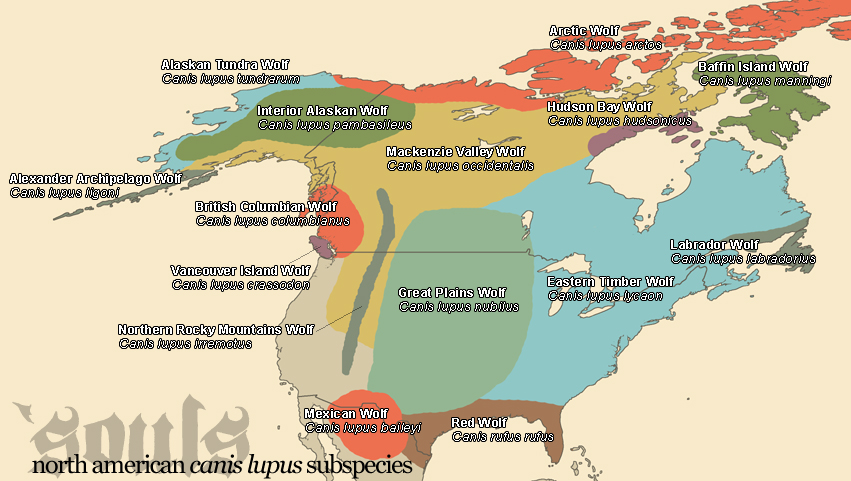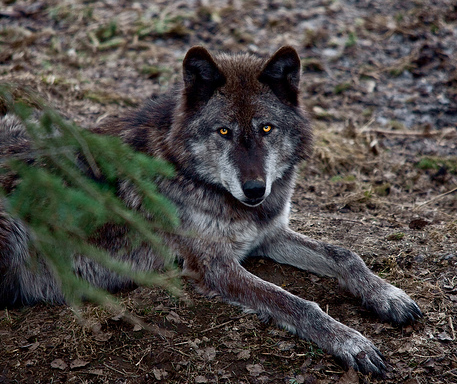Interior Alaskan Wolf (''Canis lupus pambasileus'')
See our RP Guide for more extensive information regarding wolves.
On this page... (hide)
- 1. Common Names
- 2. 'Souls Range
- 3. Appearance
- 4. Other Characteristics
- 4.1 Habitat
- 4.2 Diet
- 4.3 Survival
- 4.4 Civilization
- 5. Citations
1. Common Names
Interior Alaskan Wolf, Yukon Wolf
2. 'Souls Range
These wolves roam throughout the interior of Alaska, except the tundra region of the arctic coast.1
3. Appearance
Canis lupus pambasileus, from dougbrown47@Flickr
Interior Alaskan Wolves are very large wolves, measuring 5 to 7 feet (1.5 - 2.1 meters) in length from tip of nose to end of tail. They are at present the largest wolves in North America and possibly the world; only the European Tundra Wolf and Russian Wolf subspecies may rival it for size. The heaviest recorded gray wolf in North America was killed on 70 Mile River in east-central Alaska on July 12, 1939 and weighed 79 kilograms (170 lb). 3
Interior Alaskan Wolves typically possess a darker coat coloration; black is a common shade for their coats. Brown, gray, and white are often found in typical wolf coloration, with a lighter underside and darker back. Red, tan, and tawny colors are exceedingly rare in these wolves.
4. Other Characteristics
4.1 Habitat
Though these canines are found throughout interior Alaska and the Yukon Territory in Canada, they avoid tundra regions, as they are not able to survive the harsh winters and extreme conditions found there.
4.2 Diet
They feed on caribou, moose, dall sheep, hares, and ground squirrel.
4.3 Survival
These canines were not endangered prior to 1988, though hunting measures had threatened them time and time again. The destruction of humanity removed this threat, and once again the Interior Alaskan Wolf flourished. Though their range overlaps several other wolf subspecies as well as that of the Northern Coyote, these canines are unquestionably the dominant population of the area thanks to their large size.
4.4 Civilization
These canines almost unanimously prefer a more feral lifestyle. Their home ranges were sparsely populated by humans, and so they do not have much exposure to the human technologies more southerly species have encountered. Even if humanized living was popularized nearby, however, these canines very well may prefer to protect their old lifestyle.
5. Citations


